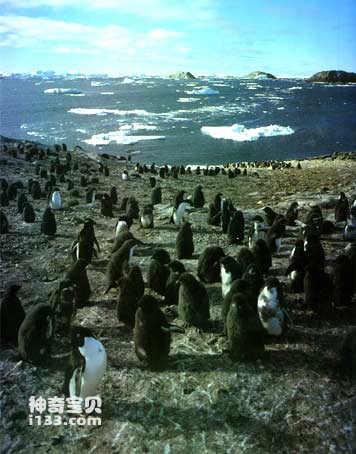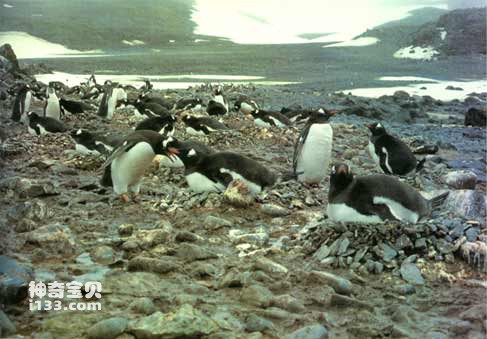Where is the home of Antarctic penguins? Could the ancestors of penguins fly? How did penguins evolve? Questions about the origin of penguins are topics that biologists are currently discussing and researching. So far it is still a mystery. But people call it the symbol of Antarctica, and it is well deserved.
1. The current situation of penguins
1. Due to the large number, high density and wide distribution of penguins, more than 100 million penguins have been found in the Antarctic region, accounting for 1/10 of the total number of seabirds in the world. They can be found along the coast of the Antarctic continent and on the islands in the sub-Antarctic region. their traces. The first thing anyone who sets foot on the Antarctic land will notice is the swarms of penguins all over the mountains and plains. Penguins bring vitality to the cold and lonely world of ice and snow in Antarctica.

2. Because the penguin’s appearance is lovable, especially its sanctimonious, polite and gentlemanly demeanor, which leaves a deep impression on people.
3. Because penguins have shared joys and sorrows and fate in Antarctica for generations, they have developed and developed the hard skills to adapt to the harsh environment of Antarctica - the special physiological function of being able to withstand low temperatures.
4. Because of the unique living habits of penguins, such as the male penguin hatching eggs and the nursery of young penguins, it has long been passed down as a good story and interesting talk.
5. Because penguins are a symbol of cold, when they see penguins, people immediately think of Antarctica, the coldest pole in the world. It’s no wonder that products in the world’s cold drink industry often use penguins as trademarks. In midsummer, the sight of penguins gives people a cool and refreshing feeling.
It is the mysterious world of Antarctica that has given birth to such strange "residents". Antarctic penguins, like polar bears, have become well-known representative animals.
2. The origin of penguins
Where is the home of Antarctic penguins? Could the ancestors of penguins fly? How did penguins evolve? Questions about the origin of penguins are topics that biologists are currently discussing and researching. So far it is still a mystery.

However, there is a theory that the penguins in Antarctica originated from a flying animal during the breakup of Gondwana. About 200 million years ago, Gondwana began to split and disintegrate, and the Antarctic continent separated and began to drift southward. At this time, there happened to be a group of flying animals flying over the ocean. They discovered the paradise land of the drifting Antarctic continent, so they circled, watched, and "discussed" among each other, and finally they decided to land on this land. on land. At first they lived a very happy life there, with plenty of food and clothing, chasing and carousing to their heart's content. However, the good times did not last long. As the continent moved southward, it became colder and colder. They had nowhere to fly if they wanted to. Surrounded by the vast sea of ice and snow, they had no choice but to stay on this piece of land. Soon the Antarctic continent reached the pole. After a long time, it was finally covered with thick ice and snow. The original lush creatures died in large numbers. Only the ancestor of penguins, a flying animal, survived. However, they have undergone radical changes, from flying to flightless, from the original broad and fluffy feathers to fine needle-like feathers, and the original slender and slender bodies have become short and fat. Physiological functions have also undergone profound changes, and their ability to withstand low temperatures has increased. As the years passed and the centuries changed, they finally turned into modern penguins and became the indigenous inhabitants of the Antarctic region.
Although the above statement is somewhat bizarre, it is not entirely unfounded and has some scientific basis. Paleontologists have discovered penguin-like fossils in Antarctica. The analysis results suggest that this penguin-like bird at that time had some characteristics of amphibians. It was about 1 meter tall and weighed 9.3 kilograms. Perhaps it was the predecessor of penguins.
animal tags: penguin seabird fossil
We created this article in conjunction with AI technology, then made sure it was fact-checked and edited by a Animals Top editor.